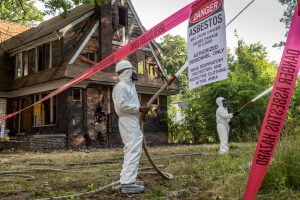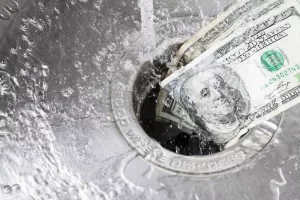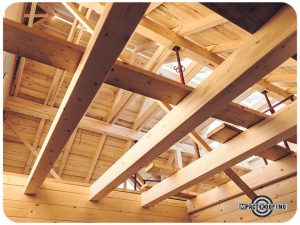Tips to Remodel a Home With Asbestos in NYC
Go Back To Previous PageRenovating your home is a great way to add value to a property. It can freshen up the look of a tired space and help generate more passive income for you and your family. However, when dealing with an old property, asbestos is one of the things you may run into.
with an old property, asbestos is one of the things you may run into.
What is asbestos?
According to the Environmental Protection Agency, asbestos is a heat-resistant fiber frequently used in building construction materials as insulation.
If inhaled, asbestos fibers can lead to conditions like lung cancer and mesothelioma, health hazards that became widely known in the U.S. beginning in the 1970s.
Before knocking down walls and replacing old floors on your property, you must know the proper procedure for dealing with asbestos, a harmful chemical.
So, there is an appropriate way to remove and dispose of it to keep everyone safe.
Sometimes, the best way to manage the presence of asbestos in your home is to contain it.
If you find asbestos, you’ll first want to isolate the area where you suspect it is hiding. Asbestos is such a dangerous chemical that you should not attempt to fix it yourself. Exposure creates a health risk.
Today, we will look at renovating your house in NYC and provide some tips to get the best possible results. Additionally, we will discuss how to avoid holding up your renovation for weeks or months. If you discover asbestos, get away from the area. Immediately after, inform others to stay away until the issue is resolved.
Start by Picking the Right Contractor
Asbestos is not like mold or other contaminants that are pretty easy to tell if it’s there. You won’t know unless you check for it. And even then, it can hide in floor tiles or behind walls. A good contractor will look at the work area, test for asbestos, and know what to look for in a project, so you don’t have to worry.
Even if they find asbestos later in the project, a good contractor will have the tools and skills to mediate it immediately without much extra hassle. You will face some additional costs and time when dealing with asbestos. But the right contractor will not only know what to do, but they will also deal with it quickly and cost-effectively.
Some contractors can budget it into the job if they will likely deal with it on your property.
Ideally, you should try to hire a licensed asbestos professional to inspect the property. A proper assessment will include a complete visual examination and careful collection and analysis of samples done by professionals.
Before any work begins, aim to obtain a written contract specifying the work plan. It should detail how the material, if found, will be cleaned up. The report should also include all applicable federal, state, and local regulations the contractor must follow. The laws vary by city, including permits, notification requirements, and asbestos disposal procedures.
Understand the Likelihood of Having to Deal With a Home With Asbestos
Not every renovation will involve asbestos. However, in NYC, there are many older buildings, and any structure built as late as the 1980s is likely to have some asbestos. Asbestos began to be phased out in the 1970s, when people discovered it was harmful to builders’ lungs, but people stopped using it together only in the 1990s.
Asbestos is a fibrous material mainly used in installation and is also found in many other building materials. Unfortunately, it wasn’t removed from many buildings and was instead covered over or left untreated. So, if you know your home is of a certain age, you can guess that you’ll be dealing with asbestos.
Choose the Most Effective Method of Disposal
When asbestos is discovered during a renovation, you must decide whether to contain it or remove it. Hiring a professional can help with that decision.
You can safely contain small patches of asbestos and prevent it from spreading or harming anyone in your home.
However, if you have large amounts of it in your home, such as in a flooring system or lining the walls of a room, then you’ll want to remove it.
While asbestos removal is the more costly of the two choices, it is the safest option if people live in the space. This also ensures that your house is up to code and won’t be a safety risk in the future. The best thing to do is to talk with your contractor about how much asbestos there is to deal with, the chances of finding more, and the best solution for your situation.


